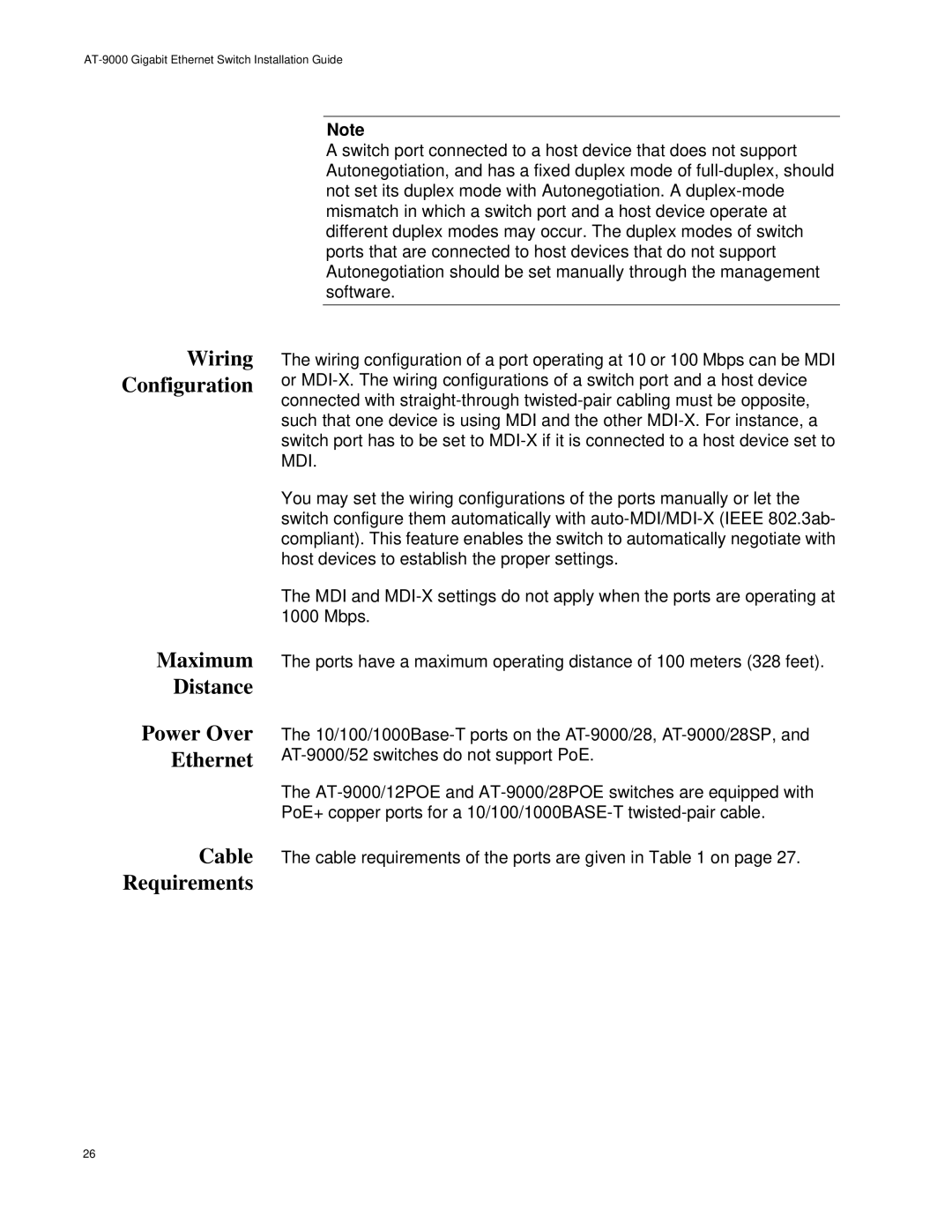Note
A switch port connected to a host device that does not support Autonegotiation, and has a fixed duplex mode of full-duplex, should not set its duplex mode with Autonegotiation. A duplex-mode mismatch in which a switch port and a host device operate at different duplex modes may occur. The duplex modes of switch ports that are connected to host devices that do not support Autonegotiation should be set manually through the management software.
The wiring configuration of a port operating at 10 or 100 Mbps can be MDI or MDI-X. The wiring configurations of a switch port and a host device connected with straight-through twisted-pair cabling must be opposite, such that one device is using MDI and the other MDI-X. For instance, a switch port has to be set to MDI-X if it is connected to a host device set to MDI.
You may set the wiring configurations of the ports manually or let the switch configure them automatically with auto-MDI/MDI-X (IEEE 802.3ab- compliant). This feature enables the switch to automatically negotiate with host devices to establish the proper settings.
The MDI and MDI-X settings do not apply when the ports are operating at 1000 Mbps.
The ports have a maximum operating distance of 100 meters (328 feet).
The 10/100/1000Base-T ports on the AT-9000/28, AT-9000/28SP, and AT-9000/52 switches do not support PoE.
The AT-9000/12POE and AT-9000/28POE switches are equipped with PoE+ copper ports for a 10/100/1000BASE-T twisted-pair cable.
The cable requirements of the ports are given in Table 1 on page 27.

